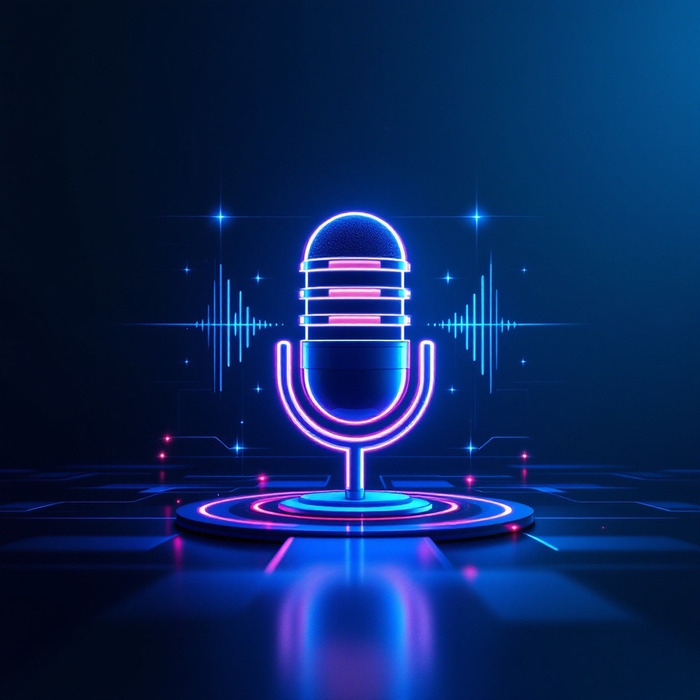
Computer-generated voices have evolved tremendously from those robot-like sounds we all remember. Next generation speech synthesis technology is transforming our relationship with devices by creating voices that sound remarkably human. It’s honestly one of the most fascinating areas of AI development happening right now.
What is Next Generation Speech Synthesis?
Speech synthesis technology is basically the magic that turns written text into spoken words. While the old systems gave us that mechanical sound we all recognize, next generation speech synthesis uses sophisticated AI approaches to create natural, flowing speech that often sounds just like a real person talking.
The key difference is in the approach. Those older text to speech systems basically stitched together pre-recorded sound fragments, which created that classic robotic quality. Today’s AI speech synthesis uses neural networks trained on massive amounts of human speech to build voices from the ground up, capturing all those little nuances that make speech sound genuine.
Thanks to these advances, next gen voice technology creates output with natural pauses, emphasis, and intonation that closely mirrors how we actually talk to each other.

Key Features That Set New Systems Apart
Human-like Voice Quality
The most noticeable improvement in advanced speech synthesis is the natural quality of the voices. Modern systems have largely eliminated the robotic sound, producing voices with natural-sounding:
- Breathing patterns
- Rhythm variations
- Voice transitions
- Pitch changes that match human speech patterns
This makes listening to synthetic speech generators much more pleasant for extended periods, opening up new applications where voice quality matters.
Emotion and Expressiveness
Perhaps the most impressive advancement is the ability to express emotions. Next generation speech synthesis technology can adjust tone to convey:
- Excitement or enthusiasm
- Sympathy or concern
- Questioning or curiosity
- Professional or casual tones
This emotional range allows for more engaging interactions and helps convey the meaning behind words more effectively.
Multilingual Support
New systems have dramatically improved multilingual speech synthesis, offering:
- Better pronunciation in non-English languages
- More natural-sounding accents
- Improved handling of language-specific features
- Smoother transitions when mixing languages
This expansion makes the technology useful worldwide and helps break down language barriers.
Customization Options
Neural voice synthesis allows unprecedented levels of voice customization:
- Adjustable speaking rates without distortion
- Voice character modification (age, gender, accent)
- Custom voice creation based on samples
- Situation-specific voice styles (announcements, conversation, storytelling)
These options let users and developers find exactly the right voice for each application.
Contextual Understanding
Modern systems can analyze text context to determine appropriate delivery:
- Changing tone for questions versus statements
- Recognizing when to emphasize certain words
- Adjusting for different content types (news, conversation, technical)
- Handling names, numbers, and special terms correctly
This contextual awareness makes AI generated speech sound much more natural and appropriate to the situation.
Real-World Applications
Virtual Assistants
The voices of Siri, Alexa, and Google Assistant keep getting better thanks to next generation speech synthesis technology. These improvements help:
- Make conversations feel more natural
- Reduce the “talking to a machine” feeling
- Allow for more complex and nuanced responses
- Create assistant personalities that users connect with
The more human these voices sound, the more comfortable people feel using voice commands regularly.
Accessibility Tools
For people with visual impairments or reading difficulties, advanced text to speech provides:
- More pleasant voices for all-day listening
- Better comprehension through natural speech patterns
- Reduced listening fatigue
- More dignified access to digital content
These improvements make digital accessibility solutions not just functional but truly enjoyable to use.
Audiobook and Media Production
Content creators now use neural speech synthesis to:
- Generate narration without voice actors
- Create consistent character voices
- Produce content in multiple languages
- Update content easily without re-recording
This has opened up audio content creation to smaller producers who couldn’t previously afford voice talent.
Customer Service Systems
Automated customer service has improved dramatically with next gen voice technology:
- Phone systems that sound more human
- Voice responses that match the emotional tone of queries
- Consistent brand voice across all customer touchpoints
- Smoother handoffs between automated and human agents
These advances help automated systems feel less frustrating and more helpful.

Language Learning and Education
Speech synthesis technology has become valuable in education by:
- Providing consistent pronunciation examples
- Reading text aloud for learning support
- Creating interactive speaking partners for language learners
- Making educational content more engaging
The natural sound quality helps students develop better listening and speaking skills.
Technology Behind the Revolution
Deep Learning and Neural Networks
The foundation of next generation speech synthesis technology is neural network systems that:
- Learn speech patterns from vast datasets
- Recognize the relationship between text and natural speech
- Generate completely new speech rather than combining samples
- Continue improving with more training data
This approach produces fundamentally different results than previous methods.
WaveNet and Similar Breakthroughs
DeepMind’s WaveNet technology represented a major leap forward by:
- Generating speech at the waveform level
- Creating more natural-sounding voices
- Handling transitions between sounds more smoothly
- Serving as the basis for many current systems
Similar technologies from other companies have built on this approach to create even better results.
Prosody Modeling
Advanced speech synthesis now includes sophisticated prosody modeling that:
- Maps the natural rhythm of human speech
- Creates appropriate pauses and emphasis
- Adjusts intonation for questions and statements
- Matches speech patterns to content type
This attention to prosody—the musical aspects of speech—makes the difference between acceptable and truly natural-sounding results.
Current Challenges and Limitations
Computing Requirements
Creating high-quality AI generated speech requires:
- Significant processing power
- Complex model training
- Large datasets of human speech
- Substantial development resources
These requirements can make the best systems expensive to develop and deploy.
Context Interpretation
Even advanced systems sometimes struggle with:
- Unusual names or terms
- Ambiguous text that could be read multiple ways
- Text that requires cultural context
- Technical language with specific pronunciation rules
Human readers naturally resolve these ambiguities, but AI systems still need improvement.
Ethical Considerations
The realism of next generation speech synthesis technology raises concerns about:
- Voice cloning without permission
- Creating fake audio for misinformation
- Impersonation for fraud
- Privacy issues in voice data collection
The industry continues to work on guidelines and safeguards to prevent misuse.

The Future of Speech Synthesis
More Sophisticated Emotions
Coming improvements will likely include:
- Wider emotional range
- More subtle emotional expressions
- Better matching of emotion to content
- Personalized emotional responses
These advances will make interactions with AI voices feel increasingly human.
Integration with Other Technologies
Next gen voice technology will work more closely with:
- Augmented and virtual reality
- Smart home systems
- Wearable technology
- Healthcare monitoring
This integration will create more seamless experiences across different technologies.
Personal Voice Creation
Future developments may make it easy for users to:
- Create a digital version of their own voice
- Design completely custom voices
- Modify voices for specific needs
- Share voice profiles across devices
This personalization will make technology feel more tailored to individual users.
Accessibility Improvements
Future speech synthesis technology will focus on:
- Supporting more languages and dialects
- Better handling of specialized terminology
- More natural pronunciation of non-standard text
- Improved tools for people with speech and hearing differences
These changes will continue to make digital content more accessible to everyone.
The Road Ahead
Next generation speech synthesis technology is transforming how we interact with our devices. Remember the last time you heard a digital assistant that sounded surprisingly human? That wasn’t by chance.
The world of computer voices has come a long way from those robotic, choppy sounds we used to laugh at. Today’s speech synthesis technology creates voices so natural, you might forget you’re talking to a machine.
What makes this possible? Traditional text to speech systems basically stitched together pre-recorded sound fragments – that’s why they sounded so mechanical. But modern AI speech synthesis works differently. These systems use neural networks trained on thousands of hours of real human speech, capturing all those subtle qualities that make our voices sound natural.
The result? Next gen voice technology that includes natural pauses, proper emphasis, and realistic intonation patterns that mirror human conversation. When your navigation app speaks to you or your phone reads a text message aloud, you’re experiencing this technology firsthand.
As this technology continues advancing, the line between synthetic and human voices keeps getting blurrier. This isn’t just cool tech – it’s changing how we experience everything from audiobooks to accessibility tools.
Want to hear the difference yourself? Try comparing an older GPS voice to your phone’s current assistant. The evolution is remarkable.
Discover how next generation speech synthesis technology is changing the way computers talk. Learn more about AI text to speech applications, challenges, and future on our homepage.

